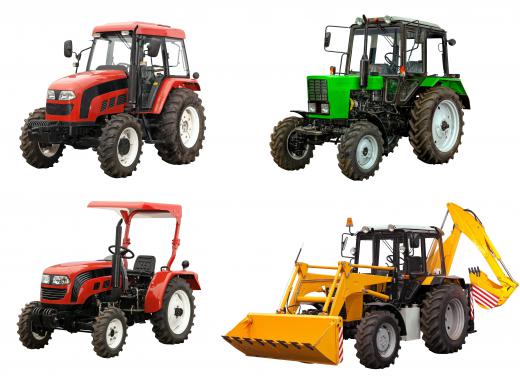There are a number of different factors you may want to consider when looking for a new cultipacker, including the square footage of the land you need to prepare, and the available methods you have for towing such a device. It is typically a good idea to choose a unit that is an appropriate width for your seed beds, so that you will not have to make an excessive number of passes to fully condition the soil. Some units are designed to be towed by an all-terrain vehicle (ATV) or tractor, while others can be pulled or pushed by hand, so that may also influence your decision. If you have a lot of ground to cover, you may also want to consider a multifunction unit. Some multifunction units are capable of cultipacking, planting seeds, and performing other useful functions all at the same time.
The primary function of a cultipacker is to compact soil after it has been conditioned by a rototiller, or a machine that uses offset disks. Those devices can prepare a seed bed for planting, but they typically leave the soil fluffy and can also result in large chunks of dirt just laying on top of the seed bed. Since seeds often need to be placed firmly in the ground in order to germinate, this fluffy soil can be poorly suited to planting. Cultipackers are essentially heavy cylinders that are capable of compacting the tilled soil enough that it can be planted effectively.

When you first begin looking for a new cultipacker, the first factor to look at is the size of the device. The best size can be determined by the type of soil you have and the total area of your seed beds or fields. Larger, heavier cultipackers will result in more compact soil, so you should look for a unit that will work best with the kind of soil you are working with. You should also look for a unit that is long enough so that you will not have to make too many passes when cultipacking your seed beds or fields.
It is equally important to consider the methods you have available for towing a cultipacker, which can also help you decide which size to get. Some units are designed for use with an ATV or tractor, so you should avoid getting one that is too big, or has the wrong type of hitch, for your vehicle. If you do not have a tractor or ATV to pull a cultipacker, then you may want to consider a unit that can be pushed or pulled by hand.
Another option to consider when looking for a cultipacker is a multifunction unit. Many cultipackers are simply solid cast iron rollers, though some are incorporated into machines that can perform a variety of other functions. If you need to cultipack and seed a very large area, one of these units may be a good investment. Some of these devices are capable of cultipacking the soil, then drilling and seeding it all in the same pass. When compared to using separate devices to perform each of these jobs, a multifunction unit can typically save a lot of time.
